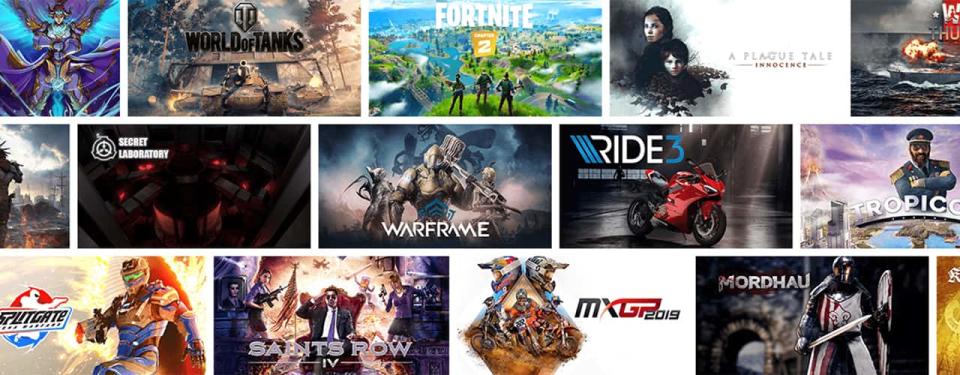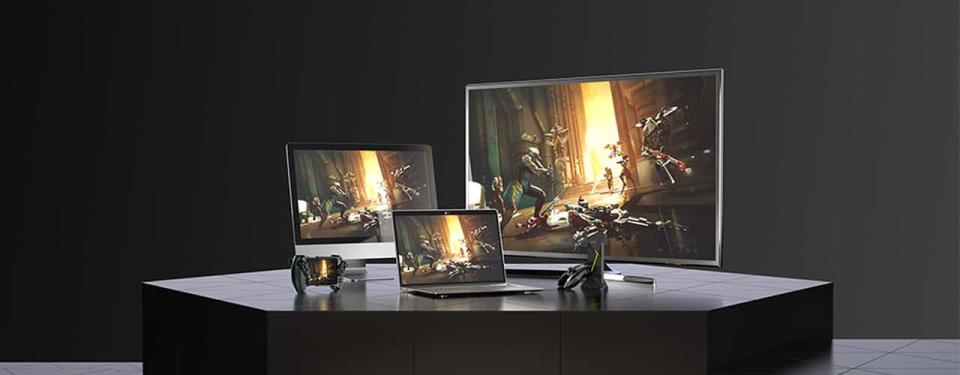GeForce Now Impressions: Gaming’s Next Frontier or Just Another Streaming Service?
Advertiser Disclosure: At Slickdeals, we work hard to find the best deals. Some products in our articles are from partners who may provide us with compensation, but this doesn’t change our opinions.

Streaming services both old and new are looking toward the gaming industry as the next place for expansion. Several companies have already tossed their hats into the ring, vying for a foothold in this burgeoning market. Microsoft, Sony, Google and Nvidia are the biggest names in the field so far, and each one offers something a bit different than the next. GeForce Now — Nvidia’s platform — went public last year, allowing gamers to check out the technology themselves for free or for a monthly subscription. And while it won’t be a perfect fit for everyone, it’s easily the most exciting game streaming service currently available.
How GeForce Now Sets Itself Apart
Most video game streaming platforms that are currently on the market work one of two ways, either they have their own storefront where users must purchase the games they wish to play, similar to Google’s Stadia service, or users are granted access to an entire library of games while they are subscribed to the service, like PlayStation Now. GeForce Now breaks the mold and does things a bit different.
More from Slickdeals: Get 35% Off Federal Tax E-filing with TaxSlayer
Nvidia’s platform instead lets you stream games you already own by connecting to third-party storefronts like Steam and Battle.net. The games must be supported by GeForce Now — currently one of its largest shortcomings — but for the most part it’s head-and-shoulders above the competition. If GeForce Now shuts down permanently or you stop paying for the service, you don’t have to worry about losing access to all your games. Many users will likely already have a sizable third-party library, so that means they already have dozens of games that can be used with GeForce Now.

Finding Compatible Games Is Often an Exercise in Futility
Unfortunately, finding a game that works with the service is more difficult than it should be. While Nvidia has added a comprehensive list of compatible titles (a feature the service sorely lacked at launch), the list is in large part composed of older games.
It was disappointing to find out that some of the biggest titles in the industry aren’t even supported. The first game I wanted to test on the service was Grand Theft Auto V — but it wasn’t available. Neither were Skyrim, Fallout 4, Sekiro, Diablo III, or any of the Call of Duty or Battlefield games. While Nvidia has done a good job expanding the list of titles from what was available at launch, the full list still feels a bit underwhelming for anyone hungry for new releases. As such, I opted to start with Destiny 2.
When launching a game, GeForce Now places you in a queue while you wait for a “rig” to become available for streaming. I waited about two minutes on a Thursday night before being connected — shorter than I expected. Once you’re in, GeForce Now will open a desktop portal that connects you to your virtual rig. From here it will launch the third-party storefront associated with the game, where you’ll enter some credentials and connect your account. It’s nothing fancy — and could use a bit of polish — but for the most part it gets the job done. After entering all my information, I was finally ready to start gaming.
Wireless Play Is a Nightmare
There’s no way around it, using GeForce Now with a wireless connection was one of the worst gaming experiences I’ve ever had. I was incredibly optimistic going into my play session, too, as my system and network requirements were all well above the recommended specs. Sadly, that didn’t seem to mean much. The game always displayed a small, yet noticeable input lag, and every minute or so the service would glitch so drastically that my Guardian would skip several yards ahead of their previous location.
Even worse was the fact that the resolution would randomly turn into a blurry mess, making the action play out like a bootlegged Michael Bay film. Warnings kept popping up on my screen saying that I had a “Spotty Connection,” even though I was less than 10 feet from my router and was testing with a high-speed fiber internet connection. I tried several other games — including Saints Row 4, Stardew Valley and Rainbow Six: Siege — but the issue persisted. I slogged through for an entire night before calling it quits and making plans to test out a wired connection over the weekend.

Wired Play Is a Dream Come True
Running GeForce Now with a wired connection couldn’t have been more different from my previous outing. All the games ran seamlessly at the highest resolution possible and there was never a downgrade in quality. Every now and again there would still be a slight hiccup in the frame rate, but nothing severe enough to detract from the overwhelmingly positive experience.
While all the games were playable, the best experiences came from single-player outings such as Saints Row 4, or games with a slower pace like Stardew Valley. In online games such as Destiny 2, there were a few moments when it felt as if my reactions were a bit slower than usual. The experience was certainly playable, but anyone competing at a high level will probably notice they aren’t running the game locally.
GeForce Now Probably Isn’t for Everyone… Yet
That begs the question — should you subscribe to GeForce Now? A free service is offered, but it’s not the ideal way to play. You’ll be limited to hour-long sessions before getting kicked off the server and forced to re-queue. Plus, during peak hours your wait for an available rig can be long — I waited over 30 minutes on a Sunday afternoon before I could even launch Destiny 2. The paid 6-month subscription of GeForce Now — called the Founders edition — is currently $24.99 – and will give you extended gaming sessions and priority access to the servers. Nvidia previously offered a monthly GeFore Now option (priced at $4.99/month), but that is currently listed as sold out.
It’s clear who GeForce Now’s audience is — gamers who don’t own a console or gaming PC but want to play the latest and greatest games. Mac users especially will find the service enticing. However, just because someone falls into this category doesn’t mean the service is right for them. Like all game streaming platforms, GeForce Now is heavily dependent on a stable internet connection. Even if you have a great network, your mileage may vary. I tested the service using the fastest internet in the area, and my time playing on a wireless connection was extremely poor.
More importantly, make sure your internet provider doesn’t put a data cap on your usage. Streaming games requires a massive amount of data, and if you’re an avid gamer you could easily max out your plan. It’s becoming an increasingly popular thing for internet service providers to do, so make sure it’s not part of your contract if you plan on streaming.
GeForce Now could be a solid alternative to buying a console or gaming PC, but it depends on what types of games you play. If you’re a fan of online shooters that require fast reflexes, then you might not enjoy the service. While there were hardly any hiccups when running with a wired connection, they did still occur — something that can’t be said when running the game from a local hard drive. Yes, the titles are still playable, just don’t expect to be performing to the best of your ability. For games that require less precision — such as Stardew Valley, Saints Row 4, The Witcher 3 or pretty much any single player game — GeForce Now is a great option that I highly recommend.
Another issue is the fact that not all games are compatible with the service, a concept that is almost non-existent for console or gaming PC owners. Even with an expanded catalog, GeForce Now’s library pales in comparison to Steam, which has more than 30,000 games available for purchase. Players who enjoy a wide variety of titles — both new and old — will find GeForce Now’s supported games library underwhelming.
It’s difficult to give GeForce Now a ringing endorsement because of all the variables at play. What games do you like? What’s your internet speed? How much input lag can you tolerate? My time with the service was both frustrating and enlightening — and heavily dependent on internet quality. My recommendation is to try the service out yourself. The streaming quality doesn’t differ between the free and paid versions, so if your internet can handle the added stress then the paid version might be worth the investment. If not? Check back in a few years when the technology has inevitably improved.
You Might Like:
Our editors strive to ensure that the information in this article is accurate as of the date published, but please keep in mind that offers can change. We encourage you to verify all terms and conditions of any product before you apply.

